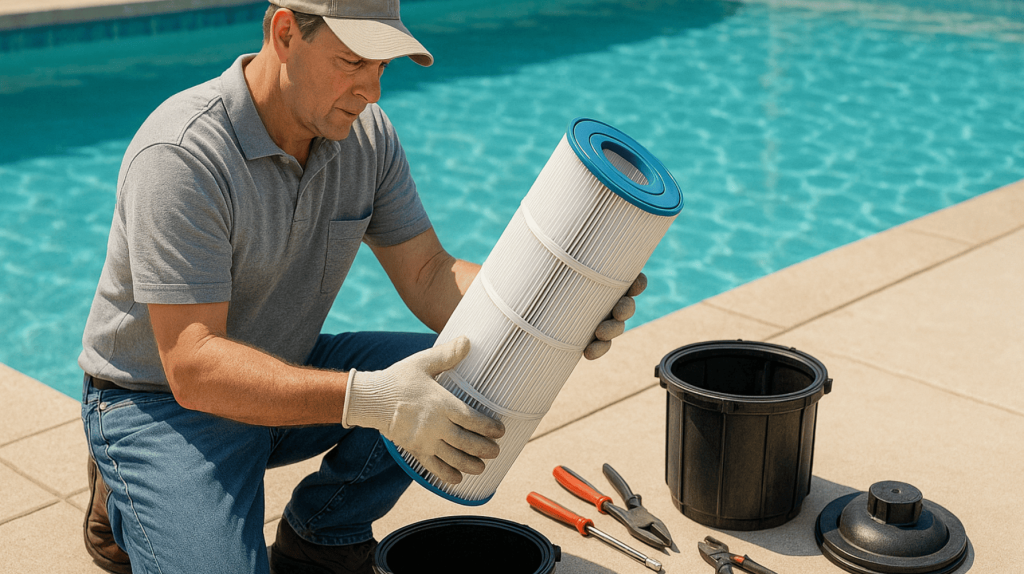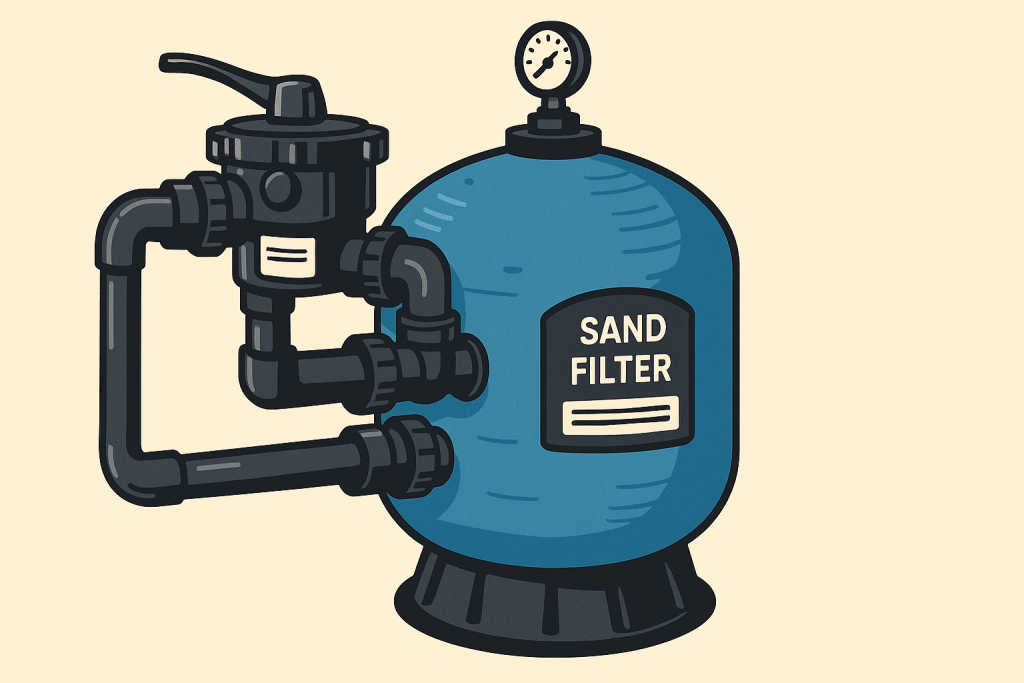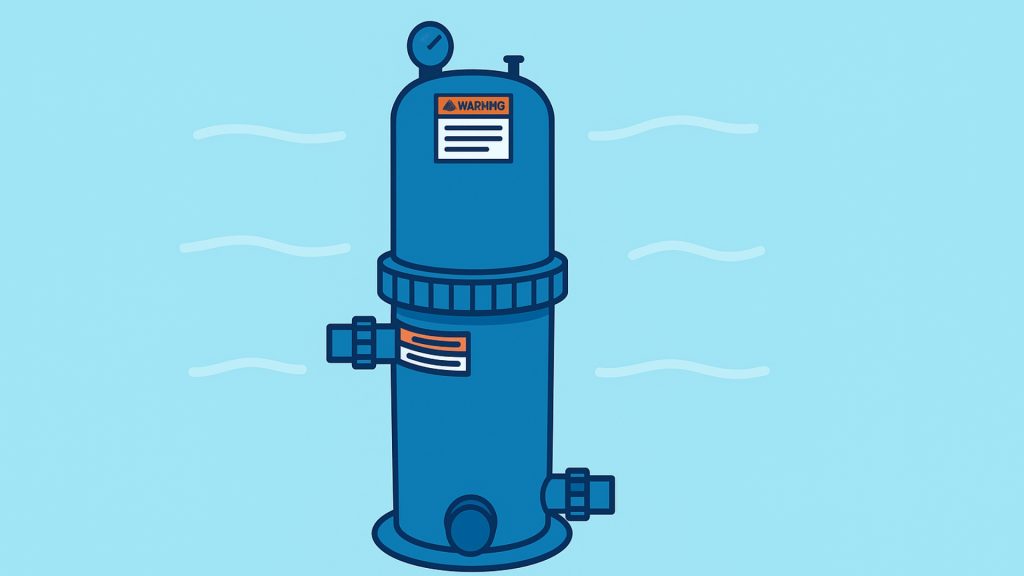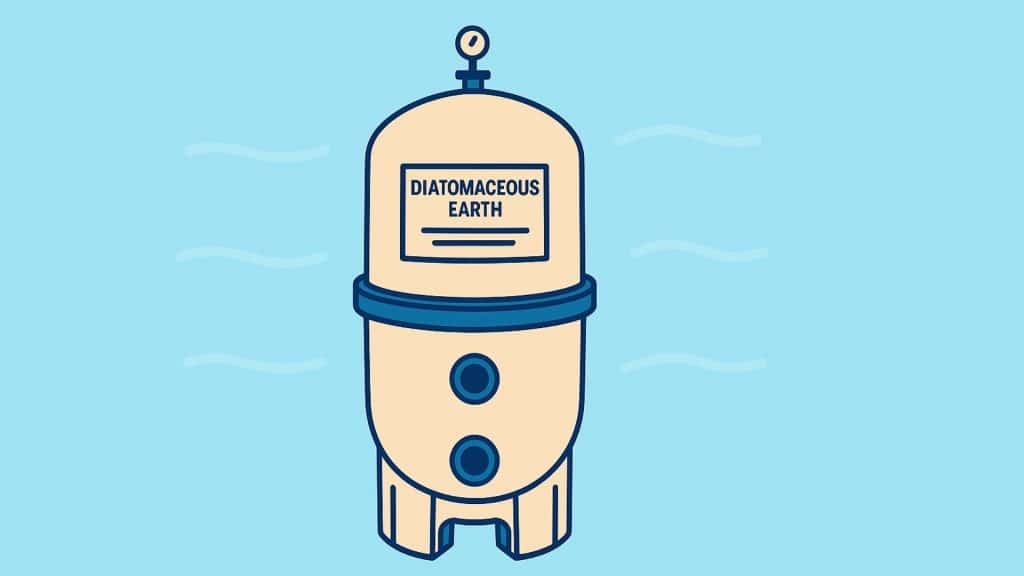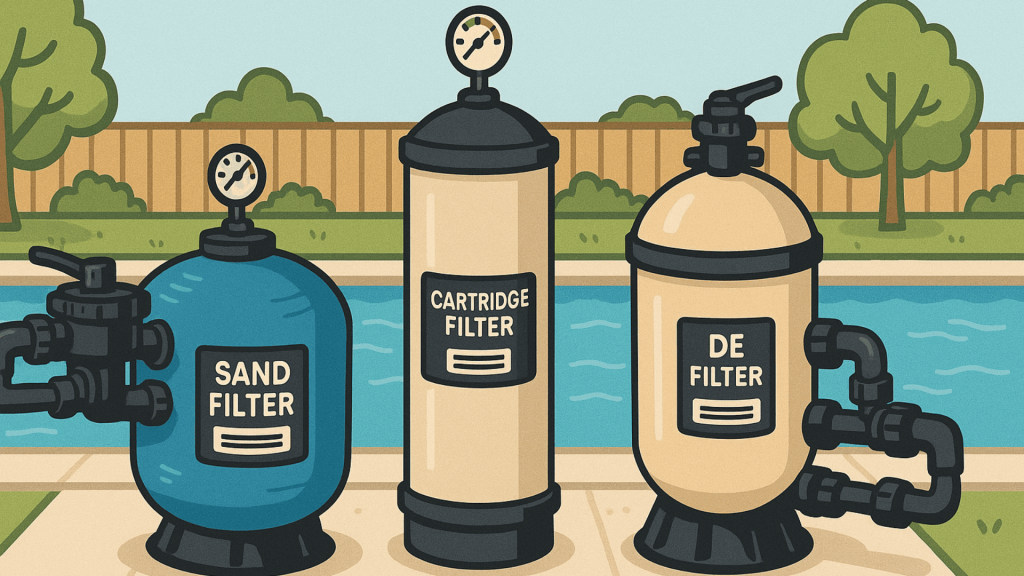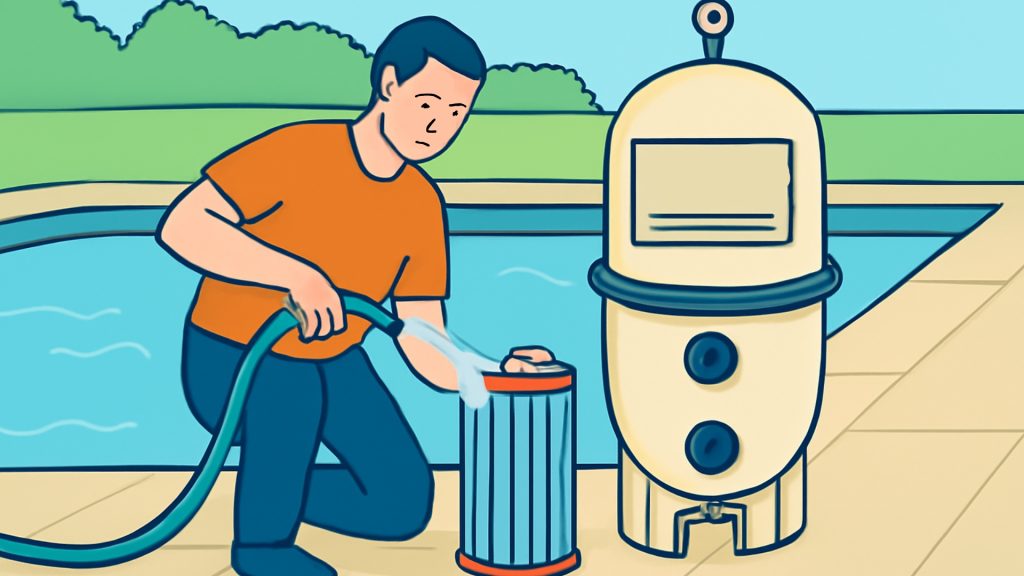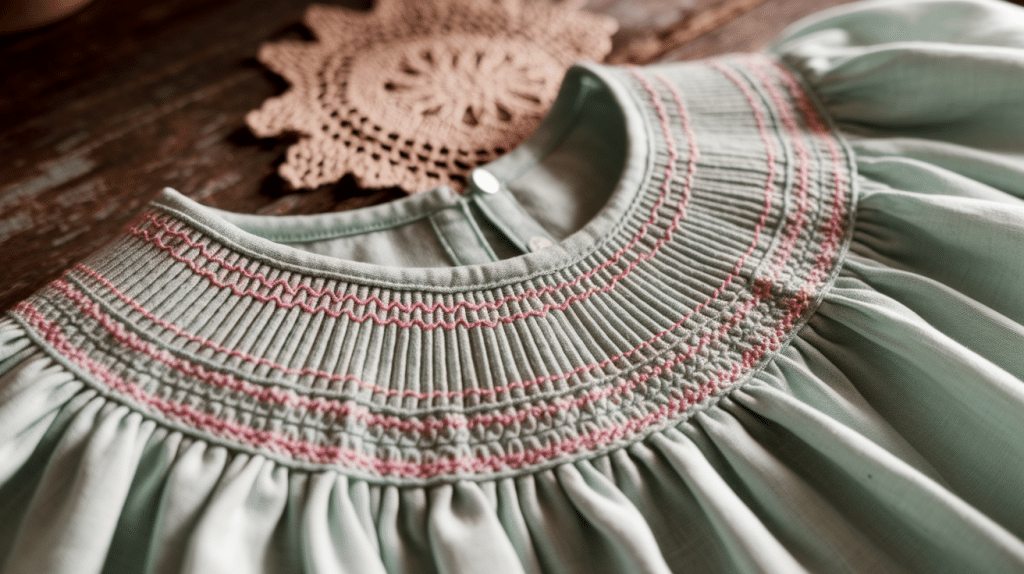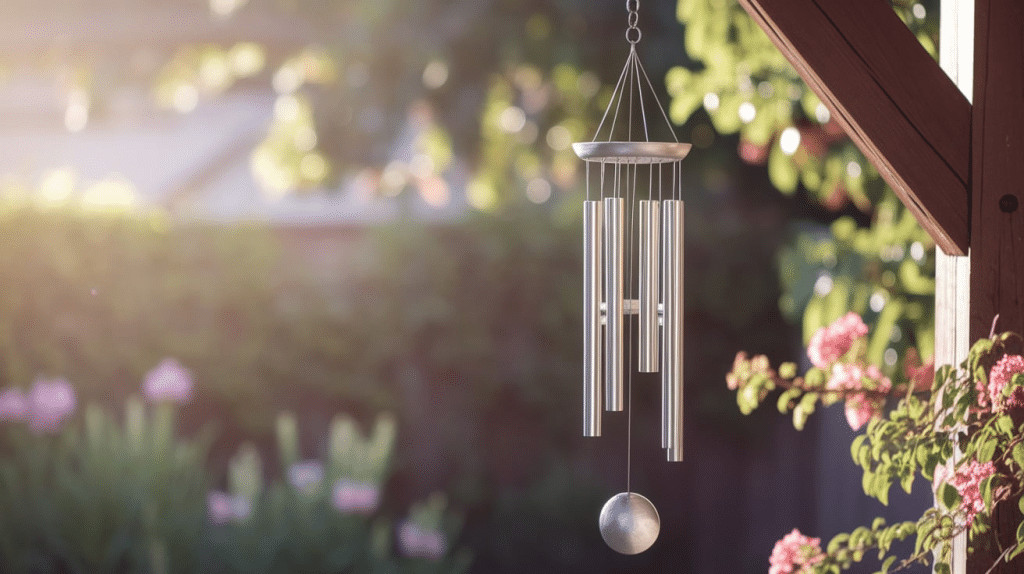Is your pool water looking cloudy despite adding chemicals?
The culprit might be a dirty filter!
Understanding how often to clean pool filter components is crucial for maintaining crystal-clear water and protecting your equipment.
Many pool owners either clean their filters too frequently, wasting time and resources, or wait until problems develop, causing unnecessary strain on their systems.
The right cleaning schedule depends on your filter type, pool usage, and environmental factors.
Achieving this balance improves water quality, extends the lifespan of expensive equipment, and reduces energy costs.
With the right approach, you’ll save time, money, and frustration while enjoying perfectly clean pool water throughout the entire season.
Why is Pool Maintenance Important?
Keeping your pool clean isn’t just about looks—it’s essential for your health and the health of your pool.
Clean pools provide safe, hygienic water for swimmers while dirty ones can harbor bacteria and algae that cause skin irritations or infections.
Regular maintenance prevents these issues and saves you money in the long run by avoiding costly repairs.
Your pool equipment, especially the pump and heating systems, works more efficiently when water is clean, using less energy and extending its lifespan.
The pool filter plays a crucial role in this maintenance system by continuously removing debris, dirt, and microscopic particles from the water as it circulates.
Think of your filter as your pool’s kidneys—it cleans the water by trapping unwanted materials before they can cause problems.
A properly functioning filter keeps your water crystal clear and reduces the need for chemicals.
Types of Pool Filters
Your pool pump and filter work together to keep your water clean.
Understanding the different types of pool filters can help you maintain your system better.
Make smarter choices when repairs or replacements are needed.
Each filter type has advantages and maintenance requirements that affect how you care for your pool system.
1. Sand Filters
Sand filters are the most traditional type and use special pool-grade sand to trap dirt and debris.
As water flows through the sand bed, particles as small as 20-40 microns get caught in the tiny spaces between sand grains.
These filters are easy to maintain, requiring only occasional backwashing when pressure builds up.
While sand filters aren’t as fine as other types, they’re durable, affordable, and perfect for larger debris.
The sand typically needs replacement every 3-5 years when it becomes less effective at trapping particles.
Many pool owners appreciate their simplicity and reliability.
2. Cartridge Filters
Cartridge filters use pleated polyester or paper elements to trap debris and dirt particles as small as 10-15 microns.
These cylindrical cartridges offer more surface area than sand filters, allowing for better filtration without requiring backwashing.
Instead, you remove the cartridge and rinse it with a garden hose every few months.
This makes cartridge filters more water-efficient and environmentally friendly.
Though the initial cost is higher than that of sand filters, and cartridges need to be replaced every 2-3 years, many pool owners prefer them for their superior filtration and lower water usage.
3. Diatomaceous Earth (DE) Filters
DE filters provide the finest filtration available, trapping particles as tiny as 3-5 microns.
They use diatomaceous earth, a powder made from fossilized algae, which coats a grid system inside the filter.
This creates a microscopic sieve that catches even the smallest contaminants.
While DE filters keep water exceptionally clear, they require more maintenance than other types.
You’ll need to backwash them regularly and add fresh DE powder afterward.
Every 1-2 years, they need a complete teardown for deep cleaning.
Despite the extra work, DE filters are the gold standard for crystal-clear pool water.
How the Type of Filter Affects Cleaning Frequency
The filter you choose for your pool directly affects how much maintenance you’ll need to perform.
- Sand filters are low-maintenance options requiring backwashing every few weeks when pressure rises. This simple process reverses water flow to flush out trapped debris.
- Cartridge filters save water despite needing hands-on cleaning every 2-3 months, as they eliminate the need for regular backwashing.
- DE filters deliver superior water clarity but require frequent backwashing, regular powder replenishment, and yearly grid maintenance.
NOTE: Environmental factors like trees or dust increase cleaning frequency; monitor your pressure gauge and clean when readings rise 8-10 PSI above normal.
How Often to Clean Your Pool Filter?
Most pool filters require cleaning every 1-3 months, but this frequency varies depending on your filter type and pool conditions.
Watch for signs like higher pressure readings or reduced water flow, which signal it’s time for cleaning.
Regular maintenance prevents costly repairs and keeps your water crystal clear.
1. Maintenance Schedules for Different Filter Types
Each pool filter type has its own cleaning needs.
Sand filters are low-maintenance, requiring backwashing every 2-3 weeks and complete sand replacement every 3-5 years.
Cartridge filters require monthly rinsing and replacement every 1-2 years, as needed, when they exhibit damage or staining.
DE filters require the most attention, with backwashing every 4-6 weeks and a yearly inspection of the grids to check for tears or damage.
2. Factors That Influence Cleaning Frequency
Your pool’s environment directly affects how often you need to clean your filter.
Pools with heavy use or a large number of swimmers require more frequent cleaning.
Location matters too – pools near trees collect more leaves and debris, while areas with wind bring in more dirt.
Larger pools process more water, putting extra strain on filters.
Special events or pool parties often require more immediate filter maintenance afterward.
3. Warning Signs Your Filter Needs Cleaning
Don’t wait for scheduled cleanings if you notice problems.
A pressure gauge reading 8-10 PSI above normal indicates a clogged filter.
Decreased water flow from return jets is another clear warning sign.
Cloudy water that doesn’t clear with chemicals typically means your filter needs attention.
After weather events such as storms or high winds, inspect your filter for any excess debris that may be affecting its performance.
Tips to Extend the Life of Your Pool Filter
Your pool filter is a significant investment, and proper care can extend its lifespan while saving you money on replacements.
Follow these simple maintenance tips to keep your filter running efficiently for as long as possible.
| MAINTENANCE TIP | KEY ACTIONS | BENEFITS | FREQUENCY |
|---|---|---|---|
| Regular Inspections | Check for cracks, tears, and damage | Catch issues before they worsen | Monthly |
| Use a Pool Cover | Cover the pool when not in use | Reduces debris and cleaning needs | When the pool is not in use |
| Maintain Water Chemistry | Keep pH, chlorine, and alkalinity balanced | Prevents filter-clogging algae and scale | Weekly testing |
| Keep the Pool Area Clean | Clear debris from the deck, empty skimmer baskets | Reduces strain on the filter system | Weekly |
Remember that prevention is always easier than repair. Just a few minutes of regular maintenance can prevent major filter problems.
By following these simple tips, you’ll extend the life of your filter, enjoy cleaner water, and lower operating costs throughout the swimming season.
Common Pool Filter Maintenance Mistakes
Even the most attentive pool owners can make mistakes when it comes to maintaining their filters.
Avoiding these common errors will help your filter system last longer and keep your pool water sparkling clean.
- Ignoring pressure gauge readings when they indicate the need for cleaning.
- Backwashing sand or DE filters too frequently.
- Using household cleaners instead of pool-specific products.
- Skipping annual deep cleaning of filter components.
- Forgetting to check O-rings and gaskets for cracks.
- Replacing entire filters when only parts need to be fixed.
- Reassembling filters incorrectly after cleaning.
PRO TIP: Regular filter maintenance saves hundreds in repair costs and prevents expensive premature replacement.
Final Words
Establishing the right schedule for how often to clean pool filter systems pays off in both water quality and equipment longevity.
Remember that pressure gauge readings are your best friend—when the needle climbs 8-10 PSI above normal, it’s cleaning time, regardless of calendar date.
Regular maintenance prevents bigger problems and keeps your pump running efficiently.
By following the specific guidelines for your filter type and adjusting for your unique conditions, you’ll enjoy sparkling clean water with minimal effort.
Your pool filter is a significant investment—treat it right with proper cleaning intervals, and it will reward you with years of trouble-free performance and pristine swimming conditions.
Clear water, clear conscience—maintain your filter and dive into worry-free swimming!
What’s your biggest pool maintenance challenge?
Share your filter cleaning routine in the comments, and let’s help each other keep our pools crystal clear!

